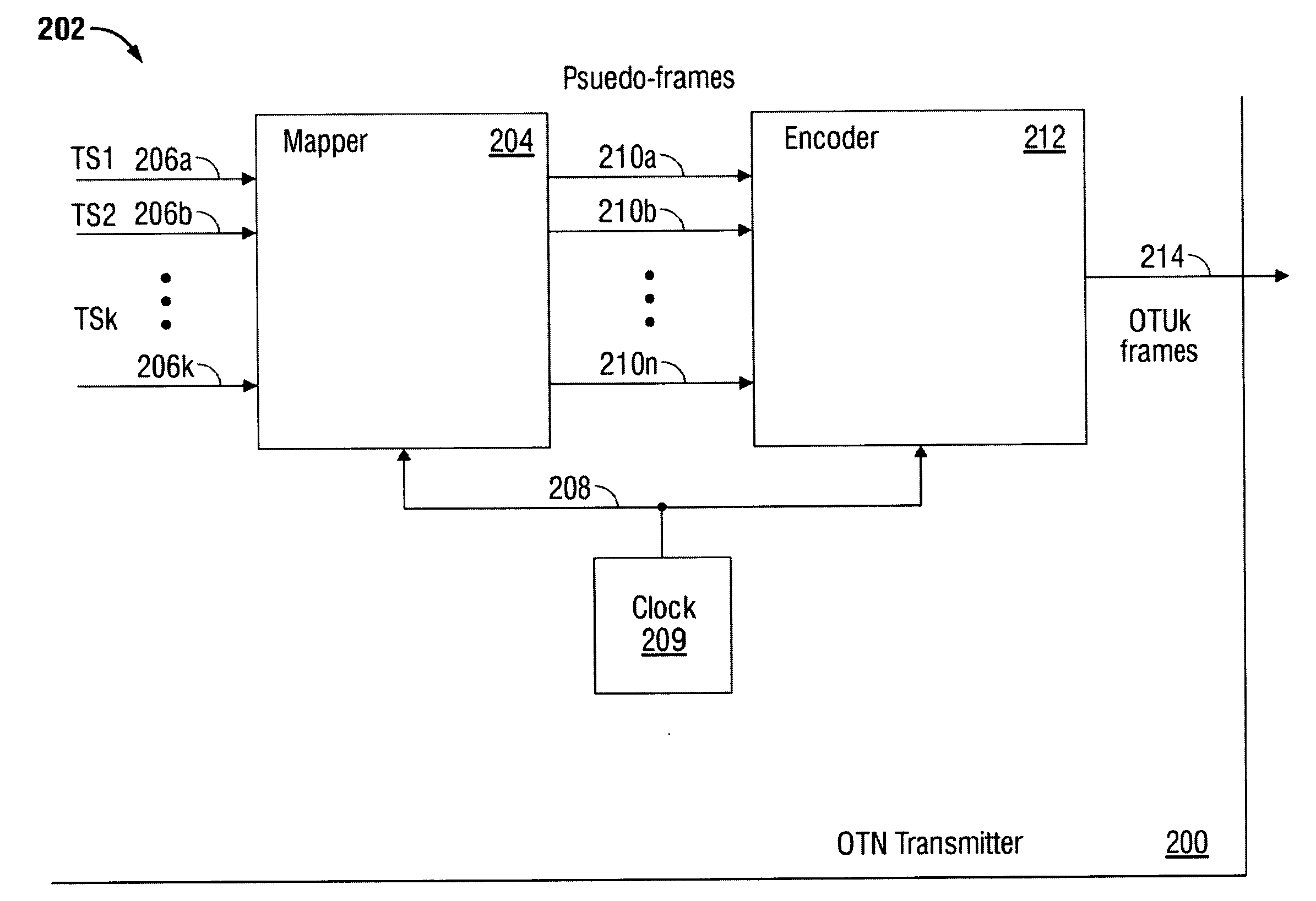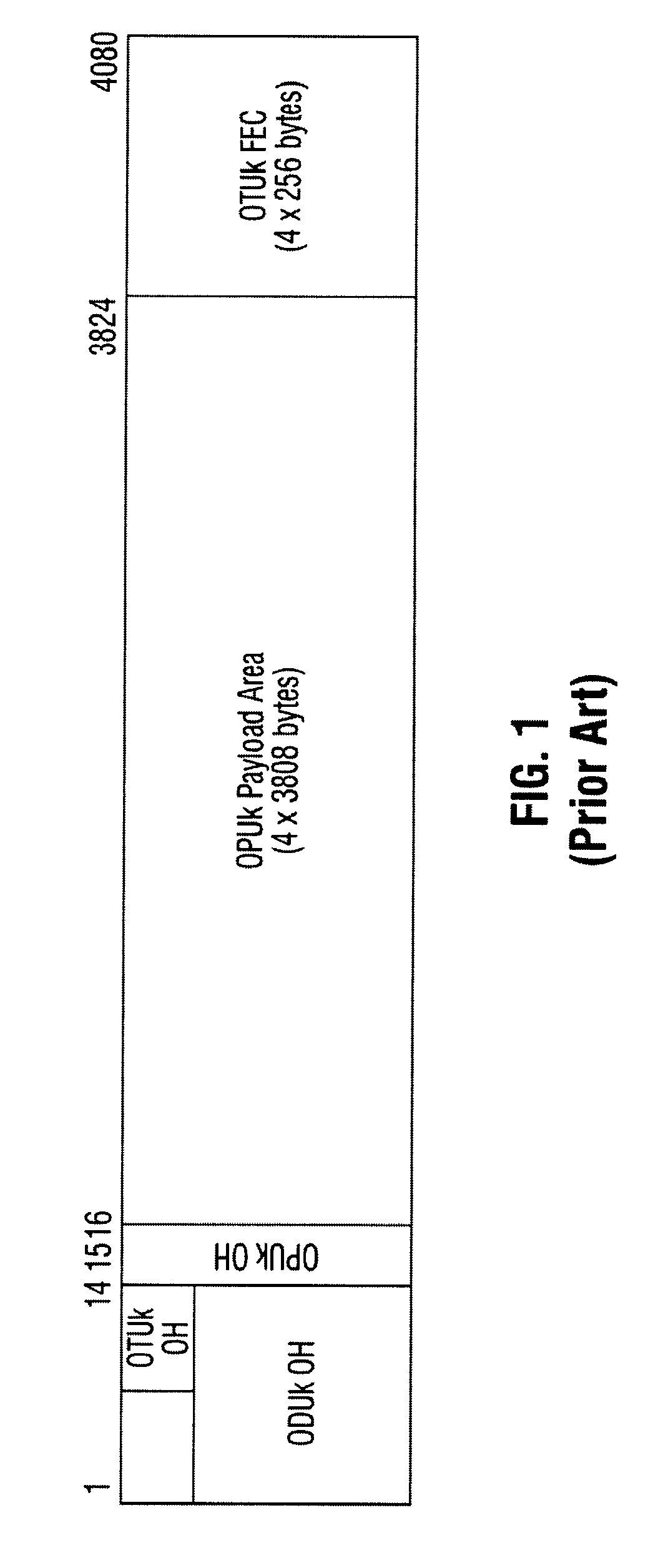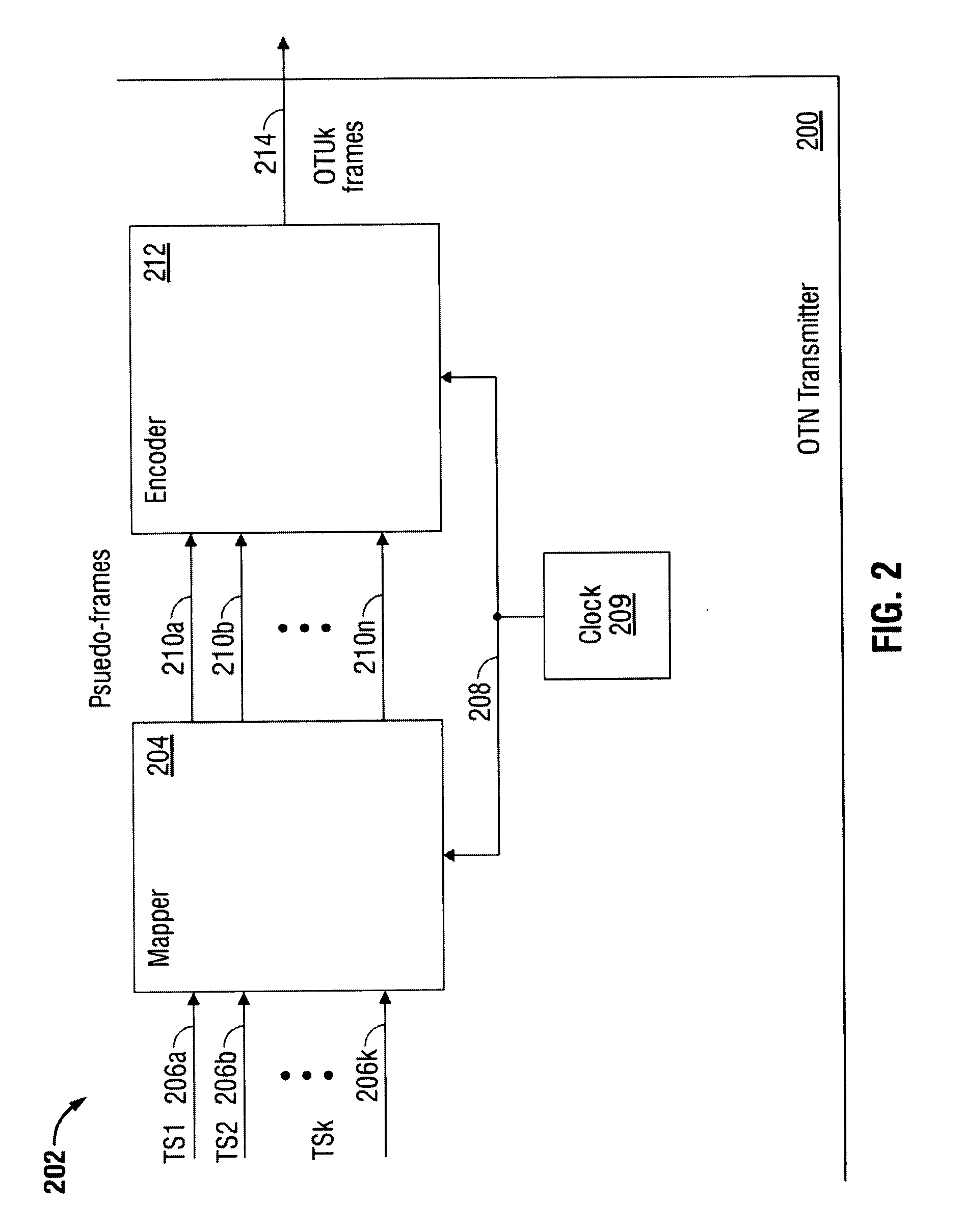System and Method for Transporting Asynchronous ODUk Signals over a Synchronous Interface
a technology of synchronous interface and oduk signal, applied in the field of system and method for mapping asynchronous tributary streams, to achieve the effect of minimizing buffering requirements, simple byte-interleaved multiplexing, and minimizing buffering requirements
- Summary
- Abstract
- Description
- Claims
- Application Information
AI Technical Summary
Benefits of technology
Problems solved by technology
Method used
Image
Examples
Embodiment Construction
[0026]FIG. 2 is a schematic block diagram of an Optical Transport Network (OTN) transmitter 200, including a system for transporting asynchronous Tributary Slots (TSs) via a synchronous Optical Payload Transport Unit of level k (OTUk) interface. The system 202 comprises a mapper 204 having an input on line 206 to accept a first plurality of TSs at a corresponding first plurality of asynchronous data rates. Inputs 206a, 206b, and 206k are shown, but k is not limited to any particular number. The mapper 204 has an input on line 208 to accept a clock signal from clock 209, and an output on line 210 to supply a first plurality of pseudo-Optical channel Data Tributary Unit (ODTU) frames synchronized to the clock signal on line 208. As shown, lines for three pseudo-ODTU frames are shown (n=3), however, n is not necessarily limited to any particular value. Typically, each TS is mapped into an independent pseudo-ODTU frame, so that k=n. Although not specifically shown, buffers internal to t...
PUM
 Login to View More
Login to View More Abstract
Description
Claims
Application Information
 Login to View More
Login to View More - R&D
- Intellectual Property
- Life Sciences
- Materials
- Tech Scout
- Unparalleled Data Quality
- Higher Quality Content
- 60% Fewer Hallucinations
Browse by: Latest US Patents, China's latest patents, Technical Efficacy Thesaurus, Application Domain, Technology Topic, Popular Technical Reports.
© 2025 PatSnap. All rights reserved.Legal|Privacy policy|Modern Slavery Act Transparency Statement|Sitemap|About US| Contact US: help@patsnap.com



